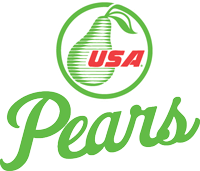 I’m sure you are! What I should probably ask is, “is salt worthy of you?” At work yesterday, I sadly realized I had left my lunch at home. Ravenous, I chose the healthiest thing I could find in the vending machine. My so-called healthy lunch contained over 1200 mg of sodium; that’s more than half the daily maximum recommended amount of 2300 mg (about a teaspoon of table salt)! The Institute of Medicine recently released a report* that Americans eat about 3400 mg of sodium daily, or about one and a half times the recommendation!
I’m sure you are! What I should probably ask is, “is salt worthy of you?” At work yesterday, I sadly realized I had left my lunch at home. Ravenous, I chose the healthiest thing I could find in the vending machine. My so-called healthy lunch contained over 1200 mg of sodium; that’s more than half the daily maximum recommended amount of 2300 mg (about a teaspoon of table salt)! The Institute of Medicine recently released a report* that Americans eat about 3400 mg of sodium daily, or about one and a half times the recommendation!
Nutritionally speaking, salt is a bit of a misnomer. What we’re really concerned about is sodium, or what makes up 40% of table salt. Sodium is an essential nutrient, but excess sodium has been linked to chronic illnesses, especially high blood pressure (hypertension). Sodium is extremely important for fluid balance, nerve impulses, and muscle contraction. But when we eat too much sodium, it accumulates in the blood and attracts fluid, and this extra fluid increases volume inside the vessels. This makes the heart work very hard to push blood through the vessels, driving up blood pressure. So yes, it is important to eat sodium, but it is very important not to eat too much!
 A good start to limit sodium is to cut the bags, boxes, and cans, and stick to the produce aisle. Fruits and vegetables are naturally low in sodium and high in other nutrients, such as fiber, potassium, and vitamin C. Not sure what to pick? Pears are sodium free, an excellent source of fiber, naturally contain 190mg of potassium, and are a good source of vitamin C. Replacing one food with one pear every day provides half of your recommended fruit servings, and may replace other sodium-laden foods in the diet!
A good start to limit sodium is to cut the bags, boxes, and cans, and stick to the produce aisle. Fruits and vegetables are naturally low in sodium and high in other nutrients, such as fiber, potassium, and vitamin C. Not sure what to pick? Pears are sodium free, an excellent source of fiber, naturally contain 190mg of potassium, and are a good source of vitamin C. Replacing one food with one pear every day provides half of your recommended fruit servings, and may replace other sodium-laden foods in the diet!
*http://www.iom.edu/Reports/2010/Strategies-to-Reduce-Sodium-Intake-in-the-United-States.aspx
